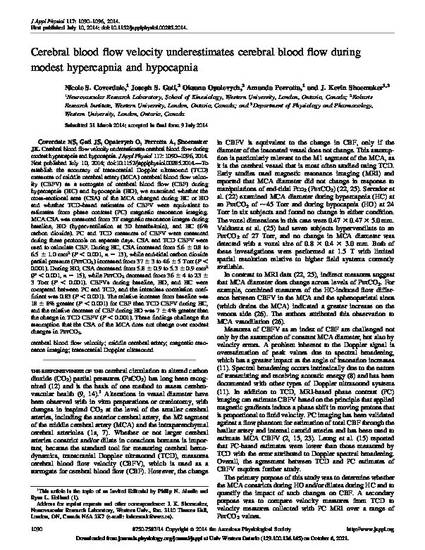
To establish the accuracy of transcranial Doppler ultrasound (TCD) measures of middle cerebral artery (MCA) cerebral blood flow velocity (CBFV) as a surrogate of cerebral blood flow (CBF) during hypercapnia (HC) and hypocapnia (HO), we examined whether the cross-sectional area (CSA) of the MCA changed during HC or HO and whether TCD-based estimates of CBFV were equivalent to estimates from phase contrast (PC) magnetic resonance imaging. MCA CSA was measured from 3T magnetic resonance images during baseline, HO (hyperventilation at 30 breaths/min), and HC (6% carbon dioxide). PC and TCD measures of CBFV were measured during these protocols on separate days. CSA and TCD CBFV were used to calculate CBF. During HC, CSA increased from 5.6 ± 0.8 to 6.5 ± 1.0 mm(2) (P < 0.001, n = 13), while end-tidal carbon dioxide partial pressure (PETCO2) increased from 37 ± 3 to 46 ± 5 Torr (P < 0.001). During HO, CSA decreased from 5.8 ± 0.9 to 5.3 ± 0.9 mm(2) (P < 0.001, n = 15), while PetCO2 decreased from 36 ± 4 to 23 ± 3 Torr (P < 0.001). CBFVs during baseline, HO, and HC were compared between PC and TCD, and the intraclass correlation coefficient was 0.83 (P < 0.001). The relative increase from baseline was 18 ± 8% greater (P < 0.001) for CBF than TCD CBFV during HC, and the relative decrease of CBF during HO was 7 ± 4% greater than the change in TCD CBFV (P < 0.001). These findings challenge the assumption that the CSA of the MCA does not change over modest changes in PETCO2.
Available at: http://works.bepress.com/kevin-shoemaker/21/
